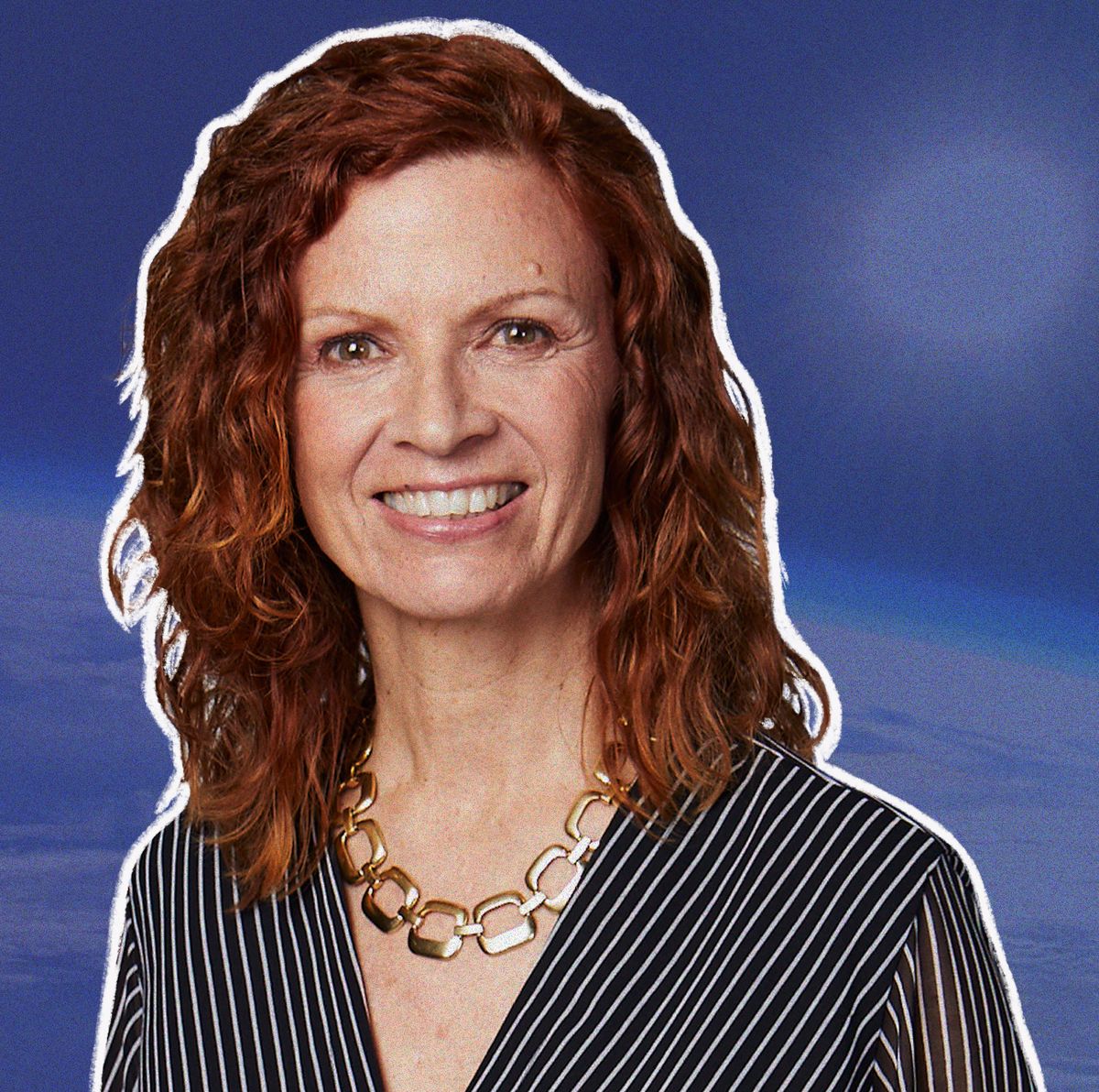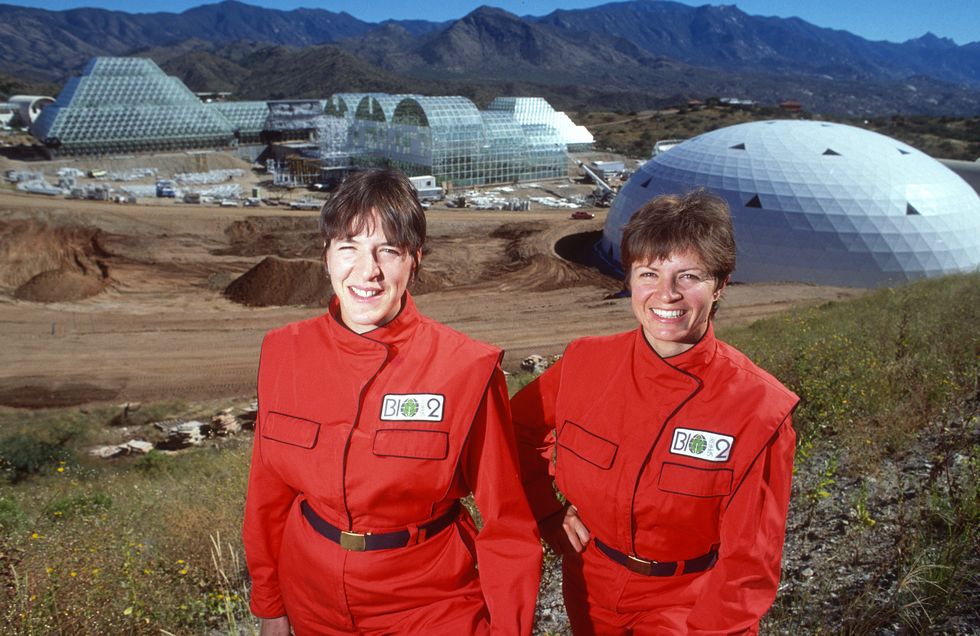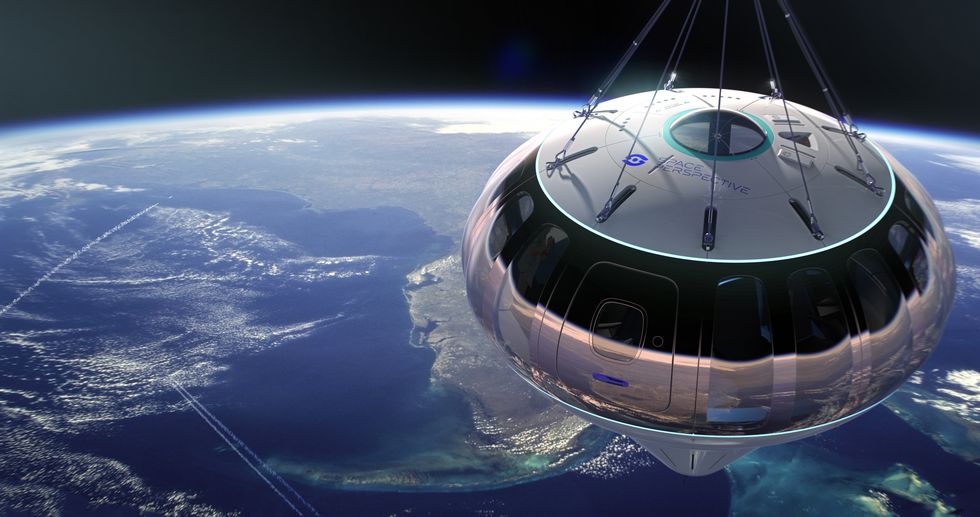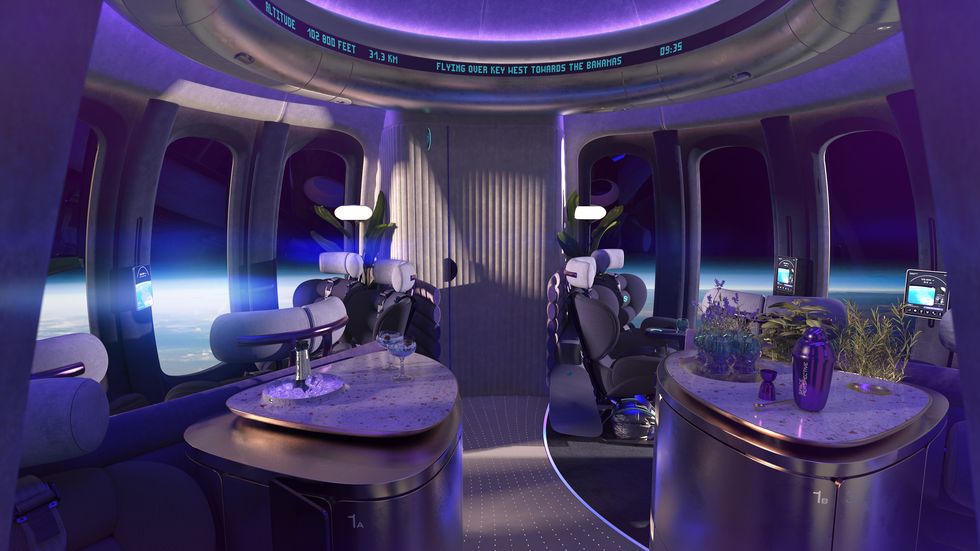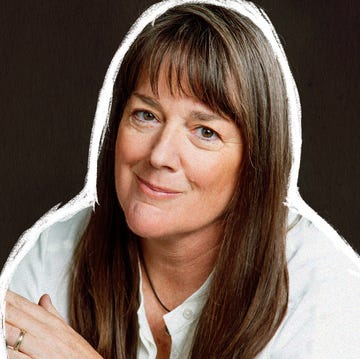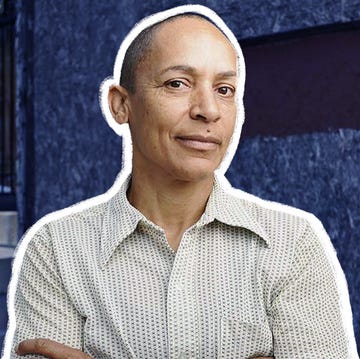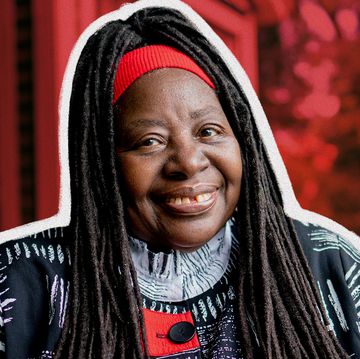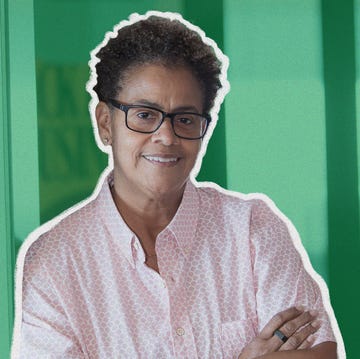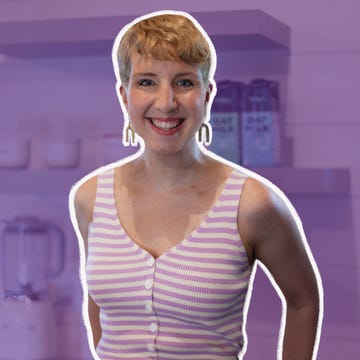In the ongoing Shondaland series Head Turners, we meet interesting women from every facet of life who are crushing it in their careers. From artists and tech mavens to titans of the boardroom, these women are breaking barriers, and they’ll share how you can too.
Unlike the billionaire boys’ club of Elon, Jeff, and Richard, Jane Poynter wants to make traveling to space much more comfortable. If you haven’t been paying attention, space travel for private citizens is no longer on the horizon. It’s here. While conventional methods of taking people above the stratosphere involve advanced rocketry, an iron gut, and loads of training, Poynter has a very different approach.
Space Perspective, Poynter’s space tourism company, is essentially the anti-adrenaline ticket to the stars. The project involves a giant balloon and capsule that travel to the edge of the Earth, where visitors can witness the blackness of space, the thin blue line of our atmosphere, and the curvature of the planet that makes the flat-Earth theory moot. Earlier this month, Poynter unveiled the MS Voyager, the first in a planned fleet of marine spaceports that will launch her balloons from practically anywhere on Earth.
“Removing geographic borders for launch and landing accelerates our mission of making this transformative experience more accessible to the world and international marketplace — safely, reliably, and with minimal impact on our planet,” Poynter says.
Space Perspective’s initial $125,000 flights on Spaceship Neptune will accommodate up to eight passengers and last roughly six hours: two hours to arrive, two hours in space, and another two hours to return. Poynter notes that while visitors won’t experience weightlessness, there will be a bar, bathroom, and Wi-Fi aboard Space Perspective’s plush space lounge. (More than 1,000 tickets have already been reserved.)
The British-born founder of Space Perspective is no stranger to extremes. She was a founding member of the Biosphere 2 program, where she lived in an enclosed, artificially created Earth environment for two years in the 1990s. From there, she founded a space technology company with her husband, Taber MacCallum, where they play pivotal roles in developing patented technologies used in rockets and aboard the International Space Station.
Poynter recently spoke with Shondaland about how her vision for space travel is unmatched and why it’s important for the people of Earth to see their planet from a very different perspective.
PAUL FEINSTEIN: Why did you want to create a new model to visit space?
JANE POYNTER: I was a kid who hid under the blankets at night with my torch reading Isaac Asimov, but it never occurred to me that I could get involved in space myself. It didn’t seem like something that was available until I got involved in Biosphere 2, which was a life-altering project for me on so many levels. It taught me not only how to dream big, but then how to do big because it was this incredibly audacious idea. This was the world’s first attempt at a human-made biosphere.
We brought in the best minds around the world, and they helped us design a very miniature, simplified version of planet Earth, and we sealed it in a container that’s tighter than the International Space Station. I went in thinking, “This is the closest thing I’m going to get to going to Mars, but I’m going to do it right here on Earth.”
While I was in there, I also had this incredible visceral experience of being part of my biosphere in a really real way. We were drinking the same water over and over again. I knew moment to moment whether the plants around me were giving me my oxygen, and as I was breathing out, I was giving them my CO2. It was very clear at a very visceral level that I was part of my biosphere, and I could see the edges of my world. That changes your perspective about the planet that we live on.
It’s not a big imaginative leap to go, “Oh, that’s what planet Earth is. We actually live for the most part on a finite life-support system called planet Earth. And it turns out to be very similar to the kind of experience that astronauts have when they see our planet from space.” We saw our planet from the inside out, while they see it from the outside in — and that really profoundly changed the way I viewed the world. I have kept that with me my entire life. And it really set me and my husband, Taber, who was in Biosphere 2 with me, on this journey to find a way to take us all to space.
PF: How did you originally get involved with Biosphere 2?
JP: I got into Biosphere 2 by accident. I was involved in these really interesting projects. One was in the outback of Australia, and the other was a research boat. They were sister projects. It turned out they were training for Biosphere 2, but I didn’t know that when I went there. I went there because it was really interesting research. All of a sudden, I hear about this thing called Biosphere 2, [and I thought] that sounds incredibly interesting.
I initially went there just to be on the design team, which then morphed into being a crew member, which was amazing. My background is in ecology and agriculture, and I was responsible for the farming side. The ecology part is interesting because it teaches you to think in total systems, so that actually has fed through into everything we do.
PF: How is your vision for space tourism different from Elon Musk, Jeff Bezos, or Richard Branson?
JP: You see the same thing [on Spaceship Neptune] that you would see looking out the window of Blue Origin or Virgin Galactic vehicles. You would see the curvature of the Earth and the thin blue line of the atmosphere. You wouldn’t be able to tell the difference between what you see at our altitude and going a little higher. If you break down a spaceflight into its component parts, there’s the rocket flight, there’s the zero-g, and there’s this unbelievable view of Earth. We have completely designed this experience around the view.
PF: What is the significance of going to 100,000 feet?
JP: You want to be above 80,000 because that’s where the sky is black, [and] 100,000 feels like a good round number, frankly. The other thing to consider is that for roughly every 10,000 feet you go up, you have to double the size of the balloon because of the nature of buoyancy, and the logarithmic way that the atmosphere is decreasing.
It’s also about giving people the most amazing experience. From an experience point of view, it makes no difference whether you’re at 100,000 feet; 120,000 fee; or 300,000 feet. You’re not orbiting the Earth, and your view of the planet is essentially the same. That’s because the planet is so big compared to this little change in altitude.
PF: How else are you differentiating yourself in this growing market?
JP: I think one of the things that really differentiates what we’re doing is our environmental footprint. We’re certainly working to make it as small as we can. From a carbon point of view, we offset everything we can’t do anything about. We operate the company as a carbon-neutral company. The spaceship Neptune itself is essentially close to a zero-emissions spacecraft. That’s really important to us.
We’re taking people up, and they’re going to have this mind-blowing experience that will change some people. You know, when astronauts come back from space, they get more involved in social and environmental causes. As a brand and as a responsible crew member of spaceship Earth ourselves, we have to behave that way.
PF: When will you start sending passengers to space?
JP: We are still on plan for the end of 2024 to start our commercial flights. We’re going to take it a little slow in the first year, roughly 25 flights in the first year, every couple of weeks. Our initial operations are going to be in Florida, launching from Kennedy Space Center and other locations around Florida. Then, we want to go out around the world very quickly. The beautiful thing about this is that we can scale very well.
PF: When are you going to have a prototype to start testing?
JP: We did a really awesome flight last year. That was a full test flight all the way from launch, up past altitude, and back down, not with a crewed flight. Toward the end of this year, we’re actually going to start up our test flight campaign. Those will be uncrewed initially, but it will be with a pressurized capsule. Then, the first human flight somewhere around the end of 2023.
PF: Are you going to be on that flight?
JP: I don’t know if I’m going to be on the first one. I think that’s really an engineering flight, so there’ll be a test pilot and one or two people from the engineering team. But you know I’m going to be on a flight. I have to go up before you go up because I’ve got to make sure that this is the ultimate experience that everybody needs to have.
PF: As a woman in a male-dominated field, what advice would you give to other women who want to get involved in space and space tourism?
JP: I would say the same thing to anybody who wants to get into space: Just do it. I appreciate that it’s maybe easier said than done if you don’t know anything about the space industry, so the first thing is to get really educated on the space industry. Depending on where you are in your career, just get in there. You have to take opportunities and work your way up.
I could talk about getting into STEM education, but you don’t even need that now. I’m hiring people [in] marketing and content, and every kind of skill that you may not think of as being part of space. It’s not just engineering. Sure, we desperately need really good engineers, and we’re very short on engineers, but we also need everything else. We’re a consumer-facing company. One of the things people should do is think very differently about what space means today compared to what it might have meant five years ago.
PF: What are your space tourism predictions for the next five years?
JP: I’d love to think about where we have been, then set the stage for where we are going. If you think about the first 10 years of this century, eight private citizens went to space, and they were all taken by governments. Last year, we sent several times that in terms of private citizens, mostly taken by private enterprise. This year, we’re going to have several times that again.
We’re just beginning. We’re at the very early stages of a brand-new industry. In five years, we’ll be well operational, and you’ll start to see hundreds, thousands of people flying in space. For me, what’s so exciting for our brand is that I think we’re going to see this have a ripple effect across society.
We’re at the beginning of a new industry that’s very similar to when air travel or computers began. People couldn’t begin to imagine how either of those industries were going to change our lives. We’ve only just begun with space travel. I don’t think people — even the people in the industry — have any idea how this is going to incredibly impact the future for all of us, and I believe for good.
Paul Feinstein is a Los Angeles-based writer who has contributed to Travel + Leisure, Fodor’s Travel, Departures, Robb Report, and Culture Trip.
Get Shondaland directly in your inbox: SUBSCRIBE TODAY
